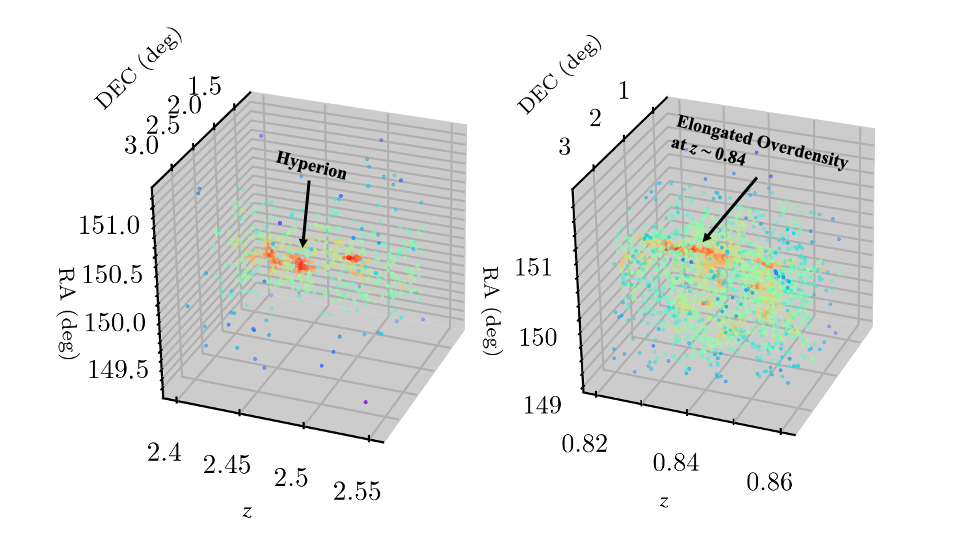COSMOS Spectroscopic Redshift Compilation
Research | | Links:

An example of how the spec-\(z\) compilation can be used to visualize large-scale structure in 3D. Left: The large \(z \sim 2.45\) overdensity ``Hyperion” (Cucciati et al. (2018)) is found to be within \(\sim 50\) cMpc two other overdense regions. Right The \(z \sim 0.84\) overdensity identified in Sobral et al. 2011 and studied extensively with VIMOS (Paulino-Afonso et al. 2018). Visualizing it in 3D shows an elongated structure along the line-of-sight.
I am leading the COSMOS spec-z compilation: a collection of all “published” spectroscopic redshifts. This is a collaborative effort between myself, Olivier Ilbert (LAM), Mara Salvato (MPE; who led past versions of the compilation), Jeyhan Kartaltepe (RIT), and Caitlin Casey (UT Austin). Olivier and I developed a compilation pipeline that gathers all published COSMOS spectroscopic studies and organizes them in a concise, uniform manner (e.g., quality flags, astrometric corrections). This is a large undertaking that involves mining databases, survey papers/websites, and community outreach. The infrastructure is highly efficient where new redshifts can easily be imported. A total of 164134 redshifts and 96934 unique 0 < z < 9 galaxies makeup the full catalog. I am currently leading the paper documenting the compilation (expected 2024). One key feature that comes from the compilation is visualizing 3D large-scale structure using spectro- scopic redshifts (shown above) which provides a different perspective of overdense region shapes. The compilation and archive can be used in future works for calibrating photometric redshifts, measuring contamination fractions, and follow-up samples with next-gen facilities (including JWST). I am the main contact for this compilation answering any questions by the community. More to follow as the paper is written and published.
